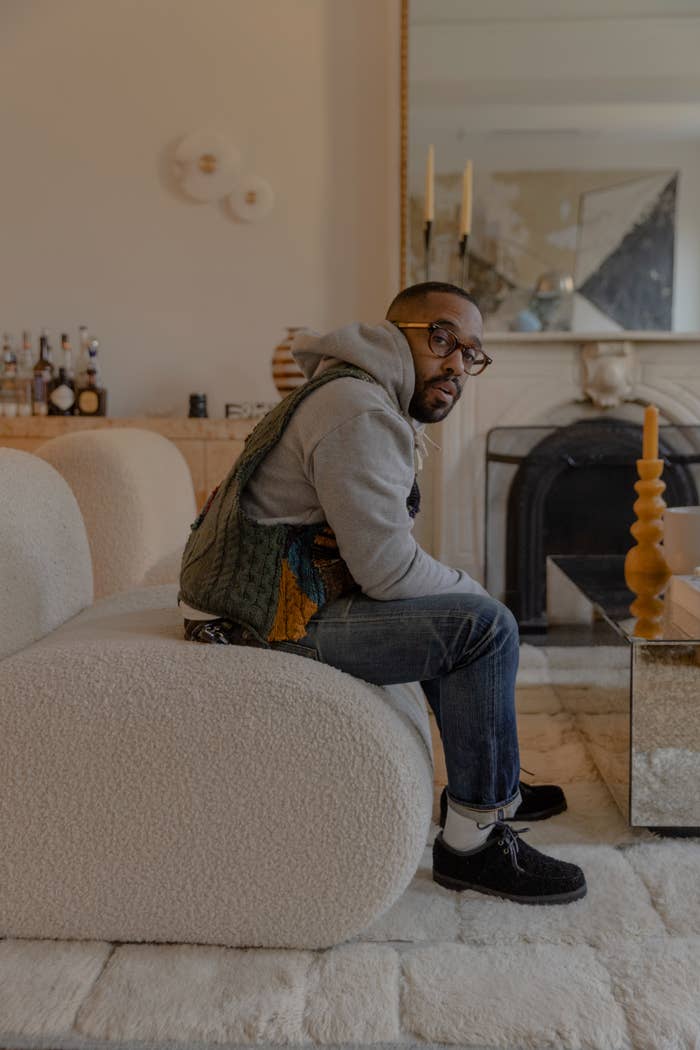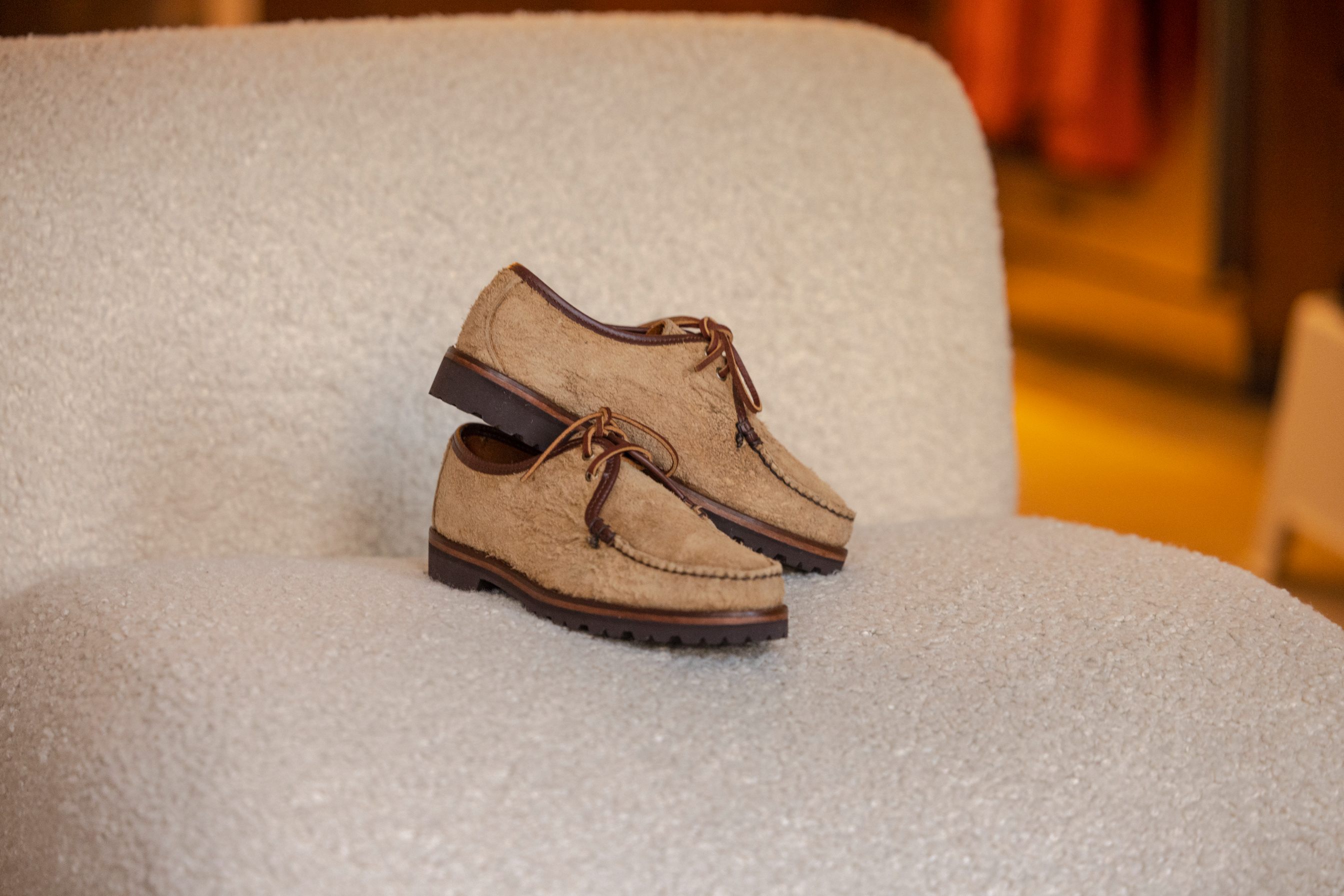
As creative director of the American-made “Sperry by Chris Echevarria” line, Echevarria aims to make the shoe more multidimensional and connect to a wider swath of consumers.
“I honestly didn't know anything,” said Chris Echevarria when asked about his knowledge surrounding Sperry’s archive. “The Top-Sider was a shoe that was presented to me. When I was younger, I never asked any questions.”
But that quickly changed once Echevarria, who founded footwear brand Blackstock & Weber and clothing line Academy, was named creative director for an American-made collection with Sperry titled, “Sperry by Chris Echevarria.”
Echevarria, who recalls wearing Sperrys to church before they transitioned into his adult wardrobe, wants to recontextualize the Sperry and make it more multidimensional and wearable for multiple people—much like his approach to the loafer for Blackstock & Weber. He also wants to put a spotlight on craftsmanship and artisans.
“With me doing Blackstock & Weber, I've noticed that as I progressed in this brand, there aren't many artists left or people who make stuff by hand,” said Echevarria. “A lot of them are older, retiring, or dying. So if I could show what is important about American manufacturing, craftsmanship in this realm, it feels like I could influence a whole other generation of people to go into that career.”
Echevarria’s collection includes the Authentic Original Boat shoe coming in brown or black made from tumbled American bison and Horween leather, and the Captain's Oxford, which is made with hairy suede uppers, a Vibram lug outsole, and full grain leather binding. Both retail at $375 and are available now at Kith boutiques globally and Echevarria’s Blackstock & Weber e-commerce site.
We sat down with Echevarria to talk about the new Sperry collection, the future of Blackstock & Weber, his new brand Academy, and why most product design feels lazy right now.

What is your history with Sperry?
I used to wear Sperrys to church with my grandmother when I was very young. And then there was Sperrys at school when I was in middle school. Because I went to prep school for a short time. And they sort of made their way into my adult wardrobe.
So when they reached out, it was a no-brainer for you?
No, it wasn’t. You know with the success of Blackstock & Weber, a lot of people reach out so it's never like a no-brainer. But it was something that I was like…you know, there's a lot of heritage here, and there's a lot to pull from. If I could pull this off in the way that I really want to, then it's a hit. But if I can't, then I have to go another way.
What's the most surprising thing you’ve discovered in the Sperry archive? Have you come across something really interesting that you didn’t know about?
I honestly didn't know anything. The Top-Sider was a shoe that was presented to me. When I was younger, I never asked any questions. I didn't know who invented it or why they invented it. At the beginning it was me being immersed in the brand. And I was like, this is really cool—tell me more. And then there's archive ads and archive styles. They had this robust Made in USA program. And I was like, that's where I want to go.

Why did you want to focus on that area?
With me doing Blackstock & Weber, I've noticed that as I progressed in this brand, there aren't many artists left or people who make stuff by hand. A lot of them are older, retiring, or dying. So if I could show what is important about American manufacturing, craftsmanship in this realm, it feels like I could influence a whole other generation of people to go into that career. Like if I could make a really good product, put it out there in a way that's appealing, it could show kids like, “Yo, this shit is cool too.”
So talk about how this translates to what you did and why you did it. I've always associated the boat shoe with a certain customer. Did you want to elevate it? What was the goal?
The goal was really to make something that felt a little bit multidimensional. The same way that I attacked the loafer, right? I wanted to recontextualize this. I wanted to design it in a way that made it fit within a modern wardrobe. As you can see, this is a little bit chunkier. It’s heftier. It has some texture to it. This is made of tumbled bison leather. This is Horween leather and a Mohawk suede. We have three materials in one shoe.
So what's next? Do you want to introduce new silhouettes? Play with existing ones?
It’s a mix of all of those things. I really want to dive into the history of what it is. And kind of squeeze that lemon as much as I can.

What is the history?
Paul Sperry was a fisherman. And he was on the deck of his boat one day, and he slipped and busted his ass. And he was like, I need to make a shoe or something that stops me from busting my ass off on these slippery boats. So what he created was the sole that had waves in it that created this suction between the waves and the deck.
And how is Blackstock & Weber doing?
Well, at this point with the loafer, we pretty much own that category. And my eyes are on physical retail.
Why was Kith the right partner?
They've been family since the beginning, and they were the first retailer that came to me and said, “We really like your stuff, and we want to give it a shot.” We started off in the Soho store and then grew the relationship. Now we're in Kith stores worldwide. And as soon as I had this thing, I started talking to Ronnie [Fieg] and Lance [Dornagon] about it, and they were like, “We want this as an exclusive too.” So it started there, and then as they saw more images of the product. They were like, “How else can we support it?” So it started off with something over at the Soho store, which we'll be launching tomorrow. But I also wanted to do something in Paris for Men’s Fashion Week, and this worked out.

A lot of heritage brands have been tapping into cooler folks for creative direction. How do you feel about that? And how do you feel about products in general right now?
I feel like a lot of product is lazy, and I feel like the consumer allows it. People are kind of wooed by the influencer-ism of fashion and the merch-ification of fashion, and we moved away from quality goods. And I think that we're turning back towards that. If you look at what's coming down the runway, a lot of people are turning back towards quality fabrics. I think as of right now, it's lazy and we gotta do better. I'm trying to do better. I mentioned Academy. And everything with Academy is made in New York from Japanese fabrics. You know what I'm saying? So like, I supported the people in the garment district intentionally. I supported some of my favorite mills in Japan intentionally because, like I said in the beginning of the interview, a lot of these artisans and artisanal goods are dying breeds. So it's important for the people that really care about them to work them into their assortment. So it comes at a cost, and a lot of people are like, “Well, your shit is expensive,” and I'm like, “Nah, that shit is just cheap,” and not cheap in a sense, from a cost perspective, just cheap in the way that it's made. So that's why they're able to sell it to you for 200 bucks.

